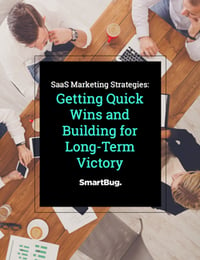
SaaS Marketing Challenges with Freemium
February 4, 2019
By Sandy Moore
When you're a marketer, there are terms used within the profession that only other marketers may know, but you need to be able to speak the universal language of marketing, too.
One universal marketing term—which is known widely in the software-as-a-service (SaaS) industry—is “freemium.” Freemium combines "free" and "premium" to describe a business model that offers basic products or services at no cost while the premium products are available for an additional expense.
SaaS companies like Hootsuite, HubSpot, Snapt and Dropbox are all great examples of organizations that offer a free trial or a basic package for nothing in order to hook new customers. This type of business model offers advantages and challenges for any overall marketing strategy.
The Freemium Marketing Advantage
The biggest advantage of offering a freemium product or service is that you're allowing new customers to try the product out for free. The hope is that the customer will fall in love the offering and make additional purchases based on their new relationship with the company. If all goes well, the customer will be happy and loyal and refer new customers to the company. In turn, the company gains new customers and drives revenue by selling their customers additional products.
Sounds like a win-win situation, right? Well, there are some marketing challenges associated with this business model, particularly in the SaaS industry. Let’s discuss them.
3 Freemium Marketing Challenges
The first challenge many companies face within the SaaS industry is determining the differences between free products and paid products and creating a detailed promotional plan to execute ongoing marketing communications. Within the content marketing plan, it is important to focus on transparency. Within the marketing collateral, you should outline the features and pricing available among all of the different products offered by the company.
By being transparent, you’ll gain the trust of new customers and maintain loyalty from current customers. One way to accomplish this is by creating a product comparison chart, a checklist, or a detailed pricing page. HubSpot’s pricing page is a great example of how to highlight the features and tools associated with free products compared to premium products.
A second challenge faced by many marketers promoting a SaaS freemium product is how to differentiate themselves from competitors offering a similar product or service. Try creating a competitor comparison sheet for new customers that showcases the benefits of your product over your competitors' products.
Keep in mind that you should stick to the facts on the comparison sheet. Never badmouth one of your competitors; if you do, new customers may question your authority and intent. You may also want to monitor online reviews of your competitors’ products (as well as your own products and services) and respond to reviews and the community directly. By communicating with potential customers on social media, review sites, and chat rooms, you're building relationships and hopefully winning their business.
The third—and probably biggest—challenge, is that, once you've offered the product or service for free, how do you convince the customer to spend money? The answer lies within the features available. Basic packages tend only to include the bare minimum. Advanced, or premium, features start to become available with additional cost. These features must be worth the additional cost. Therefore, marketing must highlight the value proposition of the premium features so the customer feels comfortable with the additional purchase. Providing an ROI calculator, case studies, or a webpage showcasing the benefits of the premium product will help demonstrate the value of the product or service so sales can close the deal.
At the end of the day, all marketers face similar challenges—no matter what the business model may be. It's important to do your homework by researching your buyer personas and learning what is most valuable to them. Be sure to provide top-notch customer service for all of your customers, regardless of the revenue generated from them. If all of your marketing efforts are customer centric, rather than company centric, the likelihood of success is much greater and you can overcome a variety of marketing challenges.
Katie Harp - Pinterest Strategist
About the author
Sandy Moore Sandy Moore is a Senior Director of Account Strategy at SmartBug Media. She has more than 20 years of experience in marketing with extensive knowledge in outbound and inbound marketing, advertising sales, promotions, public relations, and sales enablement. Read more articles by Sandy Moore.







